Special Thematic Exhibition: Museum of the Future Third Gallery
1st floor Entrance Hall
October 18, 2022 (Tue) -
December 11, 2022 (Sun)

The galleries feature art and artifacts from regions including China, Korea, Southeast Asia, Central Asia, India, and Egypt.
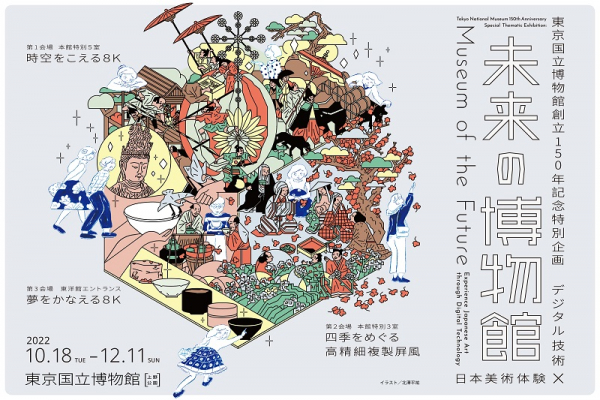
1st floor Entrance Hall
October 18, 2022 (Tue) - December 11, 2022 (Sun)
Third Gallery/Dreams to Reality with 8K
Experience Japanese Art through Digital Technology
Here, visitors can live out their dreams by engaging with art as they always wished they could. In these galleries, the limits of the impossible give way to the power of the imagination.
Colossal screens bring visitors face-to-face with larger-than-life paintings and let them stroll through an ancient temple halls. Visitors can shiver and sweat through the four seasons depicted on folding screens or use handheld lights to illuminate the mysteries of Buddhist statues. In this museum, state-of-the-art digital technology and high-resolution facsimiles revolutionize the way visitors experience Japanese art.
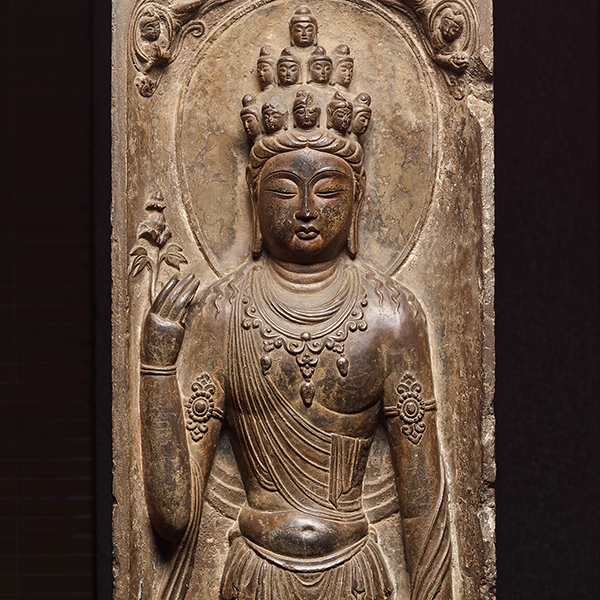
Ekadasamukha in a Niche (detail), Tang dynasty, 8th century, Gift of Mr. Hosokawa Moritatsu (Important Cultural Property)
1st floor Room 1
April 26, 2022 (Tue) - April 23, 2023 (Sun)
This section mainly features stone or gilt bronze Buddhist statues from about the 6th to the 8th century. The statues on display present the exquisite form of sculptures from the golden era of Buddhist statues in China.
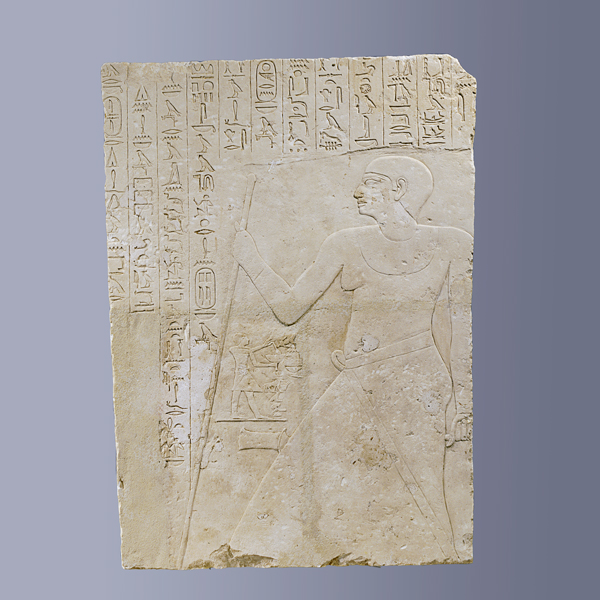
Tomb Relief of Iny, Excavated at Saqqara, Egypt, Old Kingdom 6th dynasty, ca. 23rd century BC
2nd floor Room 3
October 18, 2022 (Tue) - January 15, 2023 (Sun)
This section of the gallery features ancient art and artifacts from regions that gave rise to some of humanity’s earliest civilizations, including West Asia, Egypt, and the eastern Mediterranean. The Egyptian collection includes stoneware and earthenware objects from Pre-dynastic Egypt (circa 6000–3150 BC) as well as reliefs, mummies, and decorative art from Dynastic Egypt. Other objects frequently on view include Bronze Age burial goods from West Asia and the eastern Mediterranean, tablets bearing cuneiform script from Mesopotamia, and sculptures and pottery from ancient Iran.
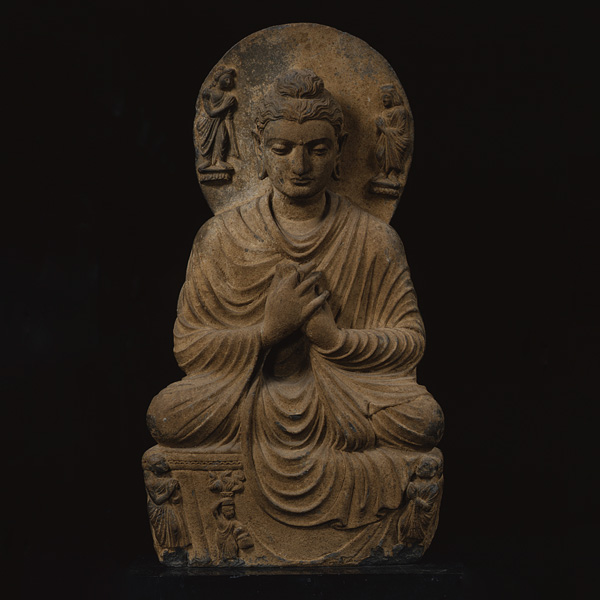
Buddha, Kushan dynasty, 2nd–3rd century
2nd floor Room 3
July 5, 2022 (Tue) - July 2, 2023 (Sun)
This part mainly features Buddhist statues from Gandhara (northwestern Pakistan) and Mathura (northern, central India) from the 2nd to the 5th century. The wide variety of sculptures on display is a notable feature.
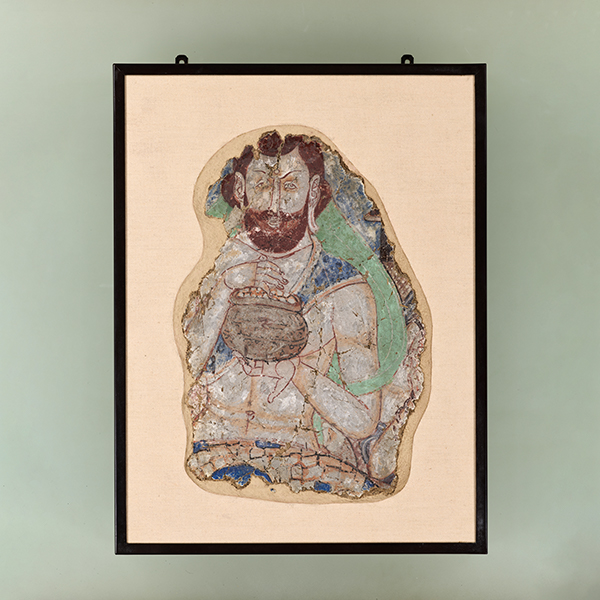
Drona, Cave 224, Kizil Caves, China, Tang dynasty, 7th century
2nd floor Room 3
October 25, 2022 (Tue) - December 11, 2022 (Sun)
This room mainly features artifacts discovered at Silk Road sites by the Japanese Ōtani expeditions at the start of the 20th century. Works are exhibited on rotation and illustrate the wide range of art and religious objects found in the diverse cultures along the Silk Road.
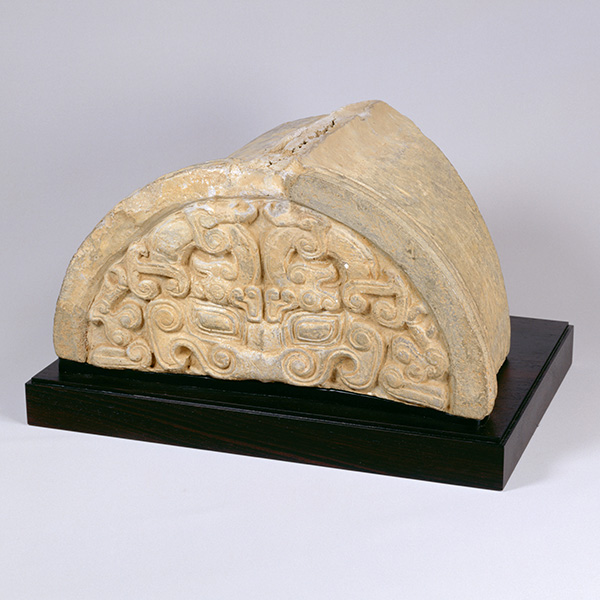
Roof Tile with an Animal Mask (Taotie), Warring States period (the Yan state), 5th–4th century BC
3rd floor Room 4
November 15, 2022 (Tue) - May 14, 2023 (Sun)
This section of the gallery traces the development of Chinese civilization through ancient pottery, jade objects, texts, and bronzes. The collection includes Neolithic pottery from the Loess Plateau, a range of stone tools from Northern China, jade objects and oracle-bone inscriptions from the Shang dynasty (ca. 1600–ca. 1100 BC), and roof tiles from each era.
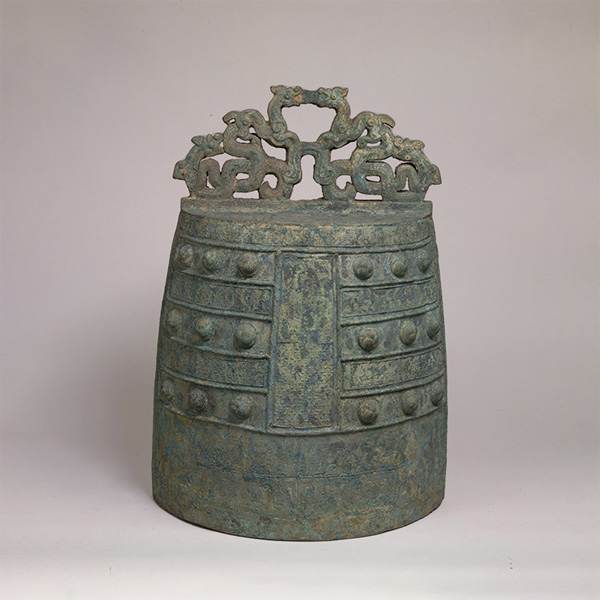
Bell (Bo) with Panchi Dragons, Warring States period, 5th century BC (Gift of Ms. Sakamoto Kiku)
3rd floor Room 5
November 29, 2022 (Tue) - March 19, 2023 (Sun)
This section of the gallery focuses on bronzes, mainly from the Shang dynasty (ca. 1600–ca. 1100 BC) to the Han dynasty (206 BC–220 AD), including ritual vessels, musical instruments, weapons, and horse tack. It also features mirrors and other bronzes from Northern China, tracing the development of early Chinese aesthetics.
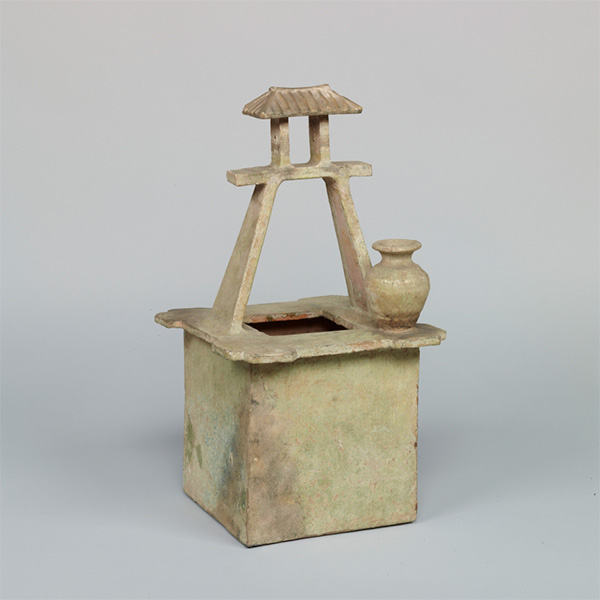
Model of a Well, Eastern Han dynasty, 2nd–3rd century (Gift of Dr. Yokogawa Tamisuke)
3rd floor Room 5
November 29, 2022 (Tue) - February 19, 2023 (Sun)
This gallery introduces burial items of tombs from about the 2nd century BC to the 8th century AD. Mingqi are models of various implements and equipment, such as cooking stoves, vehicles including carriages and oxcarts, and even toilets. Tomb figures are models of humans who served a master, such as servants and entertainers. The objects on display present the idealized lifestyle that people of this time entrusted to mingqi and tomb figures.
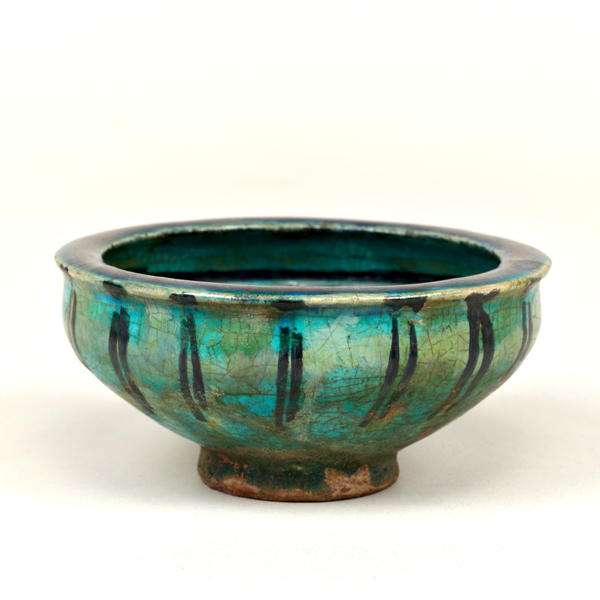
Bowl, Ayyubid dynasty, 13th century
3rd floor Room 5
October 4, 2022 (Tue) - January 22, 2023 (Sun)
The term “Islamic ceramics” refers to ceramics created mainly in the areas corresponding to present-day Iran, Iraq, Syria, Egypt, and Turkey from the 7th century. From the 1910s to the 1940s, the Museum acquired rare examples of Islamic ceramics and further enriched its collection through purchases and donations.
For the first time ever, this thematic exhibition presents a comprehensive look at the Museum’s collection of Islamic ceramics.
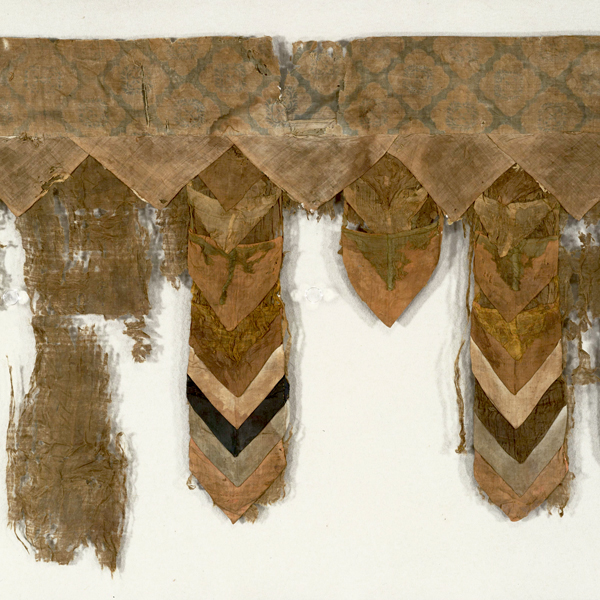
Altar Pendants (detail)
Found at the Mogao Caves, Dunhuang, China; The Cao clan’s Guiyi Army period in Dunhuang, 9th–10th century; Ōtani collection
3rd floor Room 5
September 21, 2022 (Wed) - December 4, 2022 (Sun)
Many of the textiles collected and brought to Japan by the Ōtani expeditions were found in Dunhuang in Gansu Province and Turfan in the Xinjiang Uyghur Autonomous Region in present-day China. Fragments of Buddhist ornamental textiles from Dunhuang and burial clothing from Turfan reveal the many textile techniques and designs that traversed the continent.
During research conducted last year, curators “rediscovered” each textile’s original purpose as well as other details. Visitors are invited to trace the journeys of these textiles along with those of the Ōtani Expeditions while viewing the exhibition.
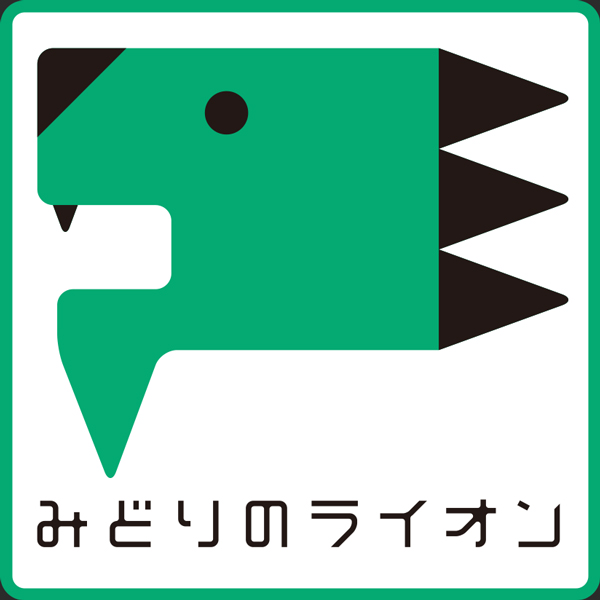
3rd floor Room 6
September 21, 2022 (Wed) - March 31, 2024 (Sun)
Activity area: Fortune-telling in Asia. Recommended for visitors with children.
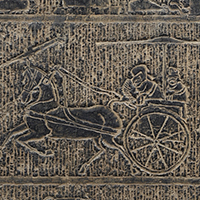
Stone Bas-reliefQueen Mother of the West / Chariot / Hunting (detail), From Jinyangshan, Shandong province, China Eastern Han dynasty, 1st-2nd century
4th floor Room 7
April 12, 2022 (Tue) - April 16, 2023 (Sun)
In the 2nd century BC, Chinese tombs were not simply holes in the ground. They developed to have walls and ceilings, with a structure almost like underground mansions. Tombs also appeared that had shrines built above ground for the bereaved families to perform rituals. Particularly in Shandong province and southern Henan province, sturdy stone was favored for making the tombs and shrines, with the stone surfaces used for carving images. Many of these stone bas–reliefs were created until the second half of the 2nd century in the Eastern Han dynasty.
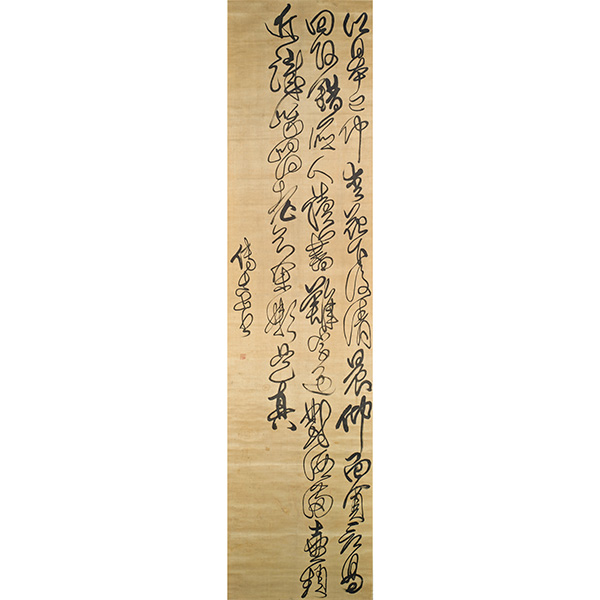
Poem in Cursive Script
By Fushan (1607–84), Qing dynasty, 17th century (on exhibit from December 20, 2022)
4th floor Room 8
November 15, 2022 (Tue) - January 29, 2023 (Sun)
The transition from the late Ming to the early Qing dynasty (around the 17th century) was a turbulent time of dynastic change from the Han Chinese-ruled Ming dynasty (1368–1644) to the Manchu-ruled Qing dynasty (1616–1912). This exhibition features examples of late Ming and early Qing calligraphy and paintings, focusing on works in the calligraphic running and cursive styles and landscape paintings, which were based on classical styles, but made effective use of materials and formats, establishing new and innovative styles.
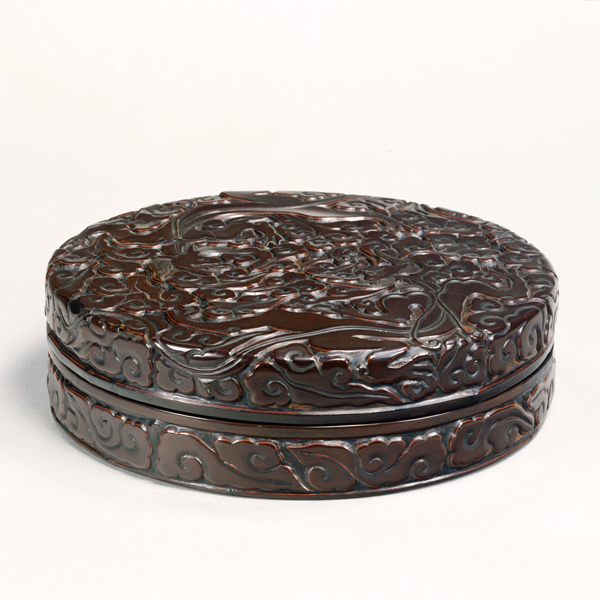
Box with Dragons among Clouds, Southern Song dynasty, 13th century
5th floor Room 9
October 4, 2022 (Tue) - December 25, 2022 (Sun)
Lacquer is the sap of the lacquer tree, which grows in East and Southeast Asia. Naturally sticky, it can be brushed onto different materials, and it hardens into a durable coating that is waterproof and resistant to acids, alkalis, and heat. The history of lacquerware in China dates back to the Neolithic period (ca. 10,000–2100 BC). Over the millennia, a number of decorative techniques evolved in China, including lacquer relief carving and lacquer with incised lines filled with gold leaf. Chinese lacquerware frequently feature abstract spiral patterns (called “pommel scrolls”) or pictorial scenes of landscapes, flowers, birds, pavilions, and people.
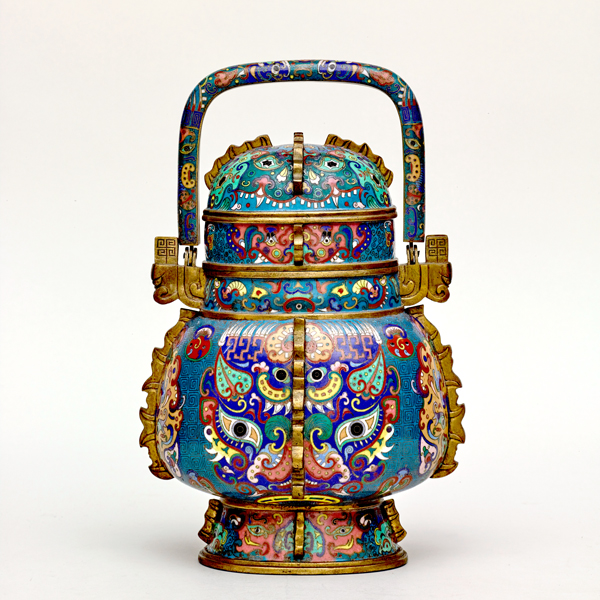
Wine Vessel (You) with Animal Masks (Taotie), China, Qing dynasty, 19th century (Gift of Mr. Kamiya Denbei)
5th floor Room 9
October 4, 2022 (Tue) - December 25, 2022 (Sun)
This section of the gallery introduces decorative art from China’s Qing dynasty (1644–1912), including works of jade, cloisonné, glass, and bamboo. These works illustrate the fine craftsmanship and sophisticated design aesthetic of decorative art from this period.
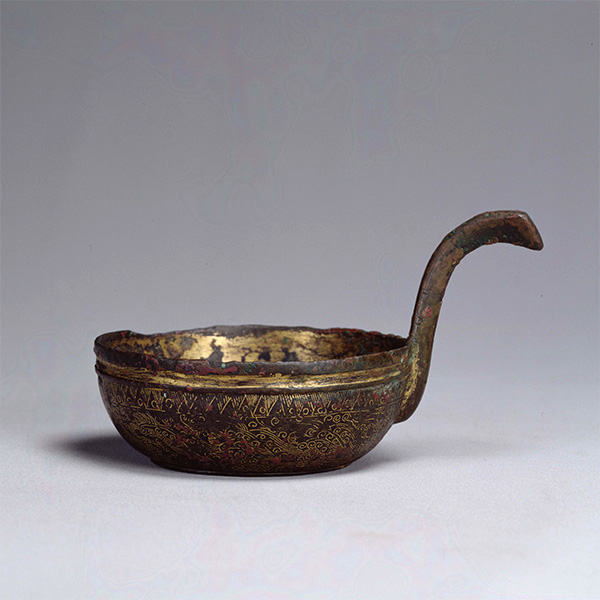
Dipper, Reportedly found in Junghwa, Korea, Three Kingdoms period (Goguryeo), 4th century (Gift of the Ogura Foundation)
5th floor Room 10
November 22, 2022 (Tue) - May 21, 2023 (Sun)
This section of the gallery introduces archeological artifacts from Korea, including stone and bronze weapons and sophisticated cast ornamental fittings with animal motifs. It also features mirrors, hooked belt fittings, and other items associated with the Lelang Commandery, an administrative division established by China’s Han dynasty in the northern part of the Korean Peninsula.
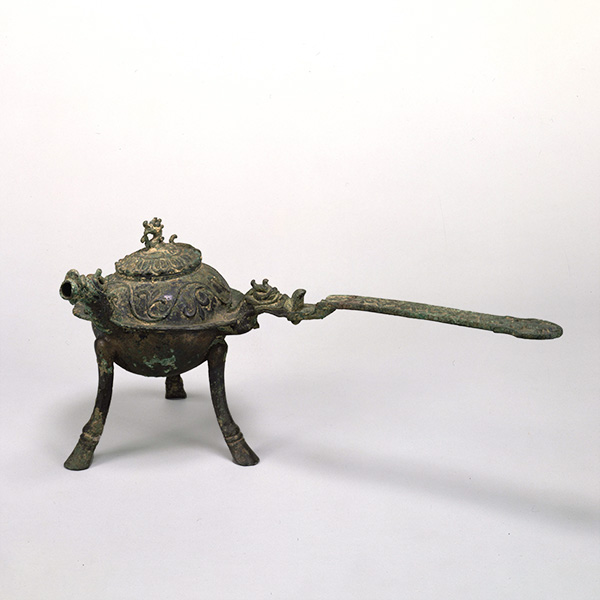
Three-Legged Vessel with a Handle, Reportedly found at Hapcheon, Korea, Three Kingdoms period, 6th century (Important Cultural Property, Gift of the Ogura Foundation)
5th floor Room 10
November 22, 2022 (Tue) - May 21, 2023 (Sun)
This gallery presents artifacts from Korea’s Three Kingdoms period (57 BC–668 AD), an era when powerful rulers vied for control of the Korean Peninsula. The three kingdoms were comprised of Goguryeo in the north, Baekje in the southwest, and Silla in the southeast. A fourth state, known as the Gaya confederacy, also existed in the south before being annexed by Silla.
Each region made full use of the materials of the time–namely, gold, silver, bronze, iron, glass, and jade–to create distinct ornaments and other objects including, armor, horse tack, clay tiles, and pottery.
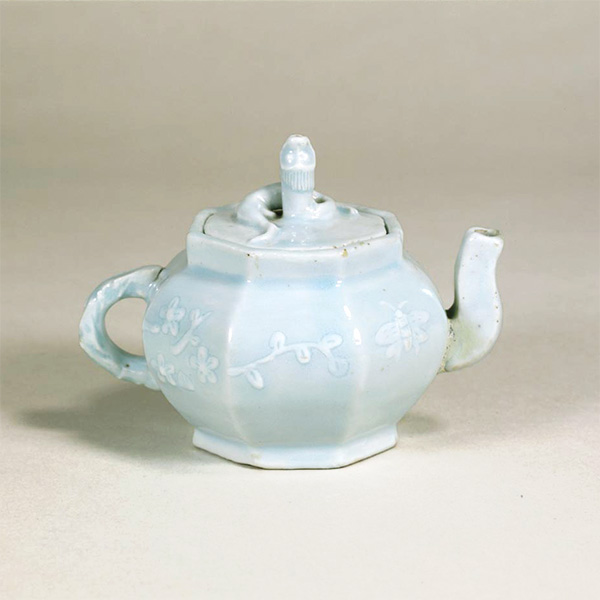
Octagonal Water Pitcher with a Plum Tree and Butterflies, Joseon dynasty, 19th century (Gift of the Ogura Foundation)
5th floor Room 10
November 22, 2022 (Tue) - May 21, 2023 (Sun)
This gallery introduces Korean ceramics from the Proto-Three Kingdoms period (ca. 1st century BC–3rd century AD) to the Joseon dynasty (1392–1910). The development of Korean ceramics during the Proto–Three Kingdoms period was influenced by the Lelang Commandery, an outpost established by China’s Han dynasty in the northern part of the Korean Peninsula. Rulers of powerful states struggled for supremacy during this period, resulting in a rich variety of distinct ceramic aesthetics in each region. Under Chinese influence, a blue-green glaze called celadon began to be produced in Korea during the Goryeo dynasty (935–1392). Over time, celadon wares took on a distinct gray-green coloring that came to be known as Goryeo celadon. The production of pottery then diversified during the Joseon dynasty to include white porcelain and Buncheong ware, a type of stoneware often featuring designs in white slip and iron pigment.
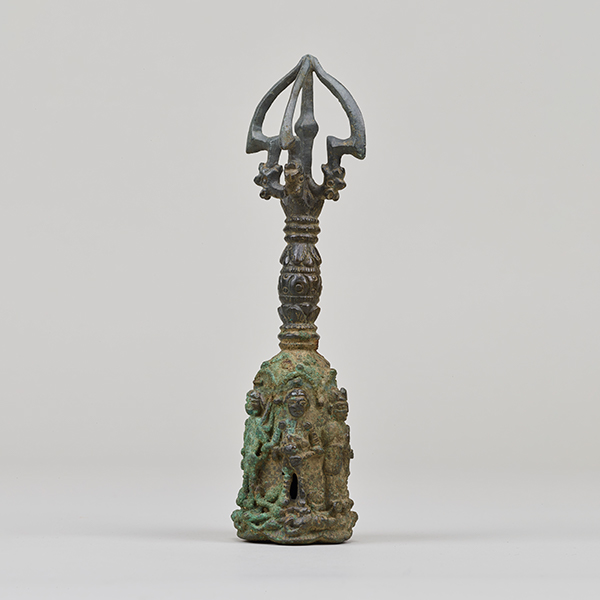
Bell with a Five-Pronged Vajra, Korea, Goryeo dynasty, 14th century (Gift of the Ogura Foundation)
5th floor Room 10
October 12, 2022 (Wed) - April 9, 2023 (Sun)
Buddhism began to spread on the Korean Peninsula during the 4th and 5th centuries. This section introduces Buddhist art from the Three Kingdoms period (57 BC–668 AD), the Unified Silla dynasty (669–935), and the Goryeo dynasty (935–1392), including gilt-bronze statues, bricks, roof tiles, and ritual implements.
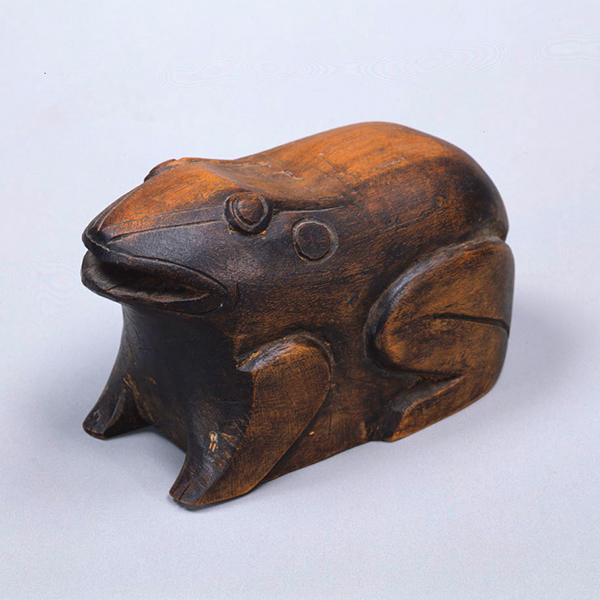
Frog, Joseon dynasty, 19th century (Gift of Mr. Tsukagoshi Masa'aki)
5th floor Room 10
October 25, 2022 (Tue) - January 29, 2023 (Sun)
This gallery features Korean furniture, clothing, and room decor from the Joseon dynasty (1392–1910). While the costumes, furniture, tableware, and stationery each possessed individual beauty, their appeal was enhanced by their placement in living spaces.
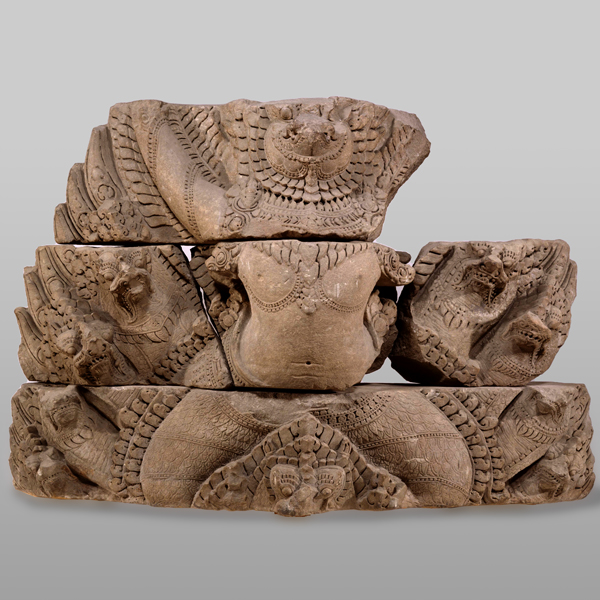
Garuda Riding on Naga (Snake deity), Acquired through exchange with l'École française d'Extrême-Orient, Angkor period, 12th-13th century
Basement Room 11
April 5, 2022 (Tue) - April 9, 2023 (Sun)
This section introduces sculptures from Khmer, with a focus on stone statues from the Angkor period (9th–13th century). The Tokyo National Museum collection of Khmer sculptures, which are distinguished in both quality and quantity, was acquired in 1944 through an exchange project with the research institute l'École francaise d'Extrême–Orient.
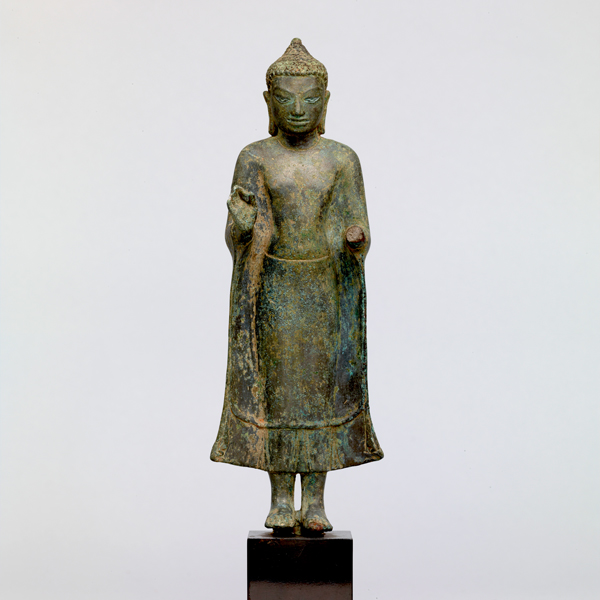
Standing Buddha, Dvaravati period, 7th-8th century
Basement Room 12
April 5, 2022 (Tue) - April 9, 2023 (Sun)
This part focuses on Southeast Asian gilt bronze statues of gods and Buddhist deities from the 7th to 13th century. The statues are made using the lost–wax casting process, and therefore they have common qualities in their plasticity and smoothness of form.
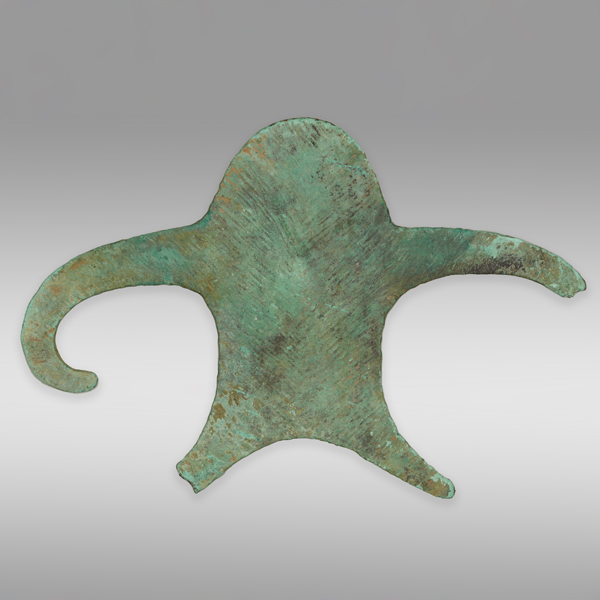
Human-shaped Object, Attributed provenance: Uttar Pradesh, India, Copper Hoard culture, ca. 1500 BC
Basement Room 12
April 5, 2022 (Tue) - April 9, 2023 (Sun)
The excavated pottery and metal wares exhibited in this part clearly show the prosperity of cultures with rich regional characteristics in ancient India and Southeast Asia.
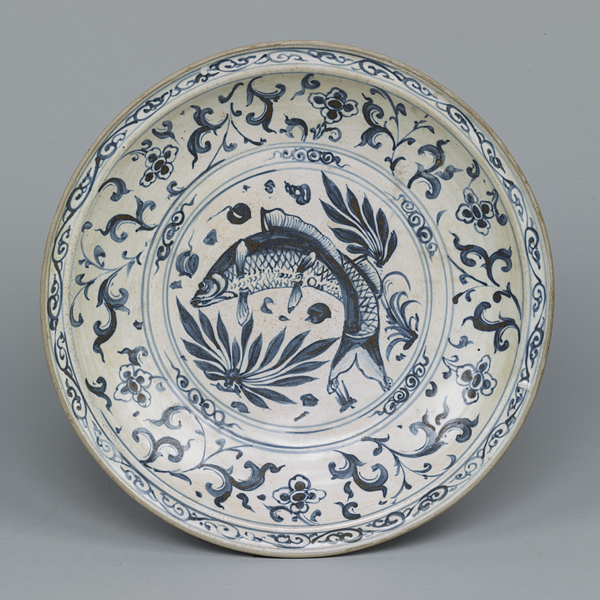
Large Dish Fish and water plant design in underglaze blue, Formerly owned by Okano Shigezō, 15th-16th century (Important Art Object)
Basement Room 12
August 2, 2022 (Tue) - April 2, 2023 (Sun)
This part introduces the individual styles of ceramics made in Cambodia, Thailand, and Vietnam from the 9th to the 16th century.
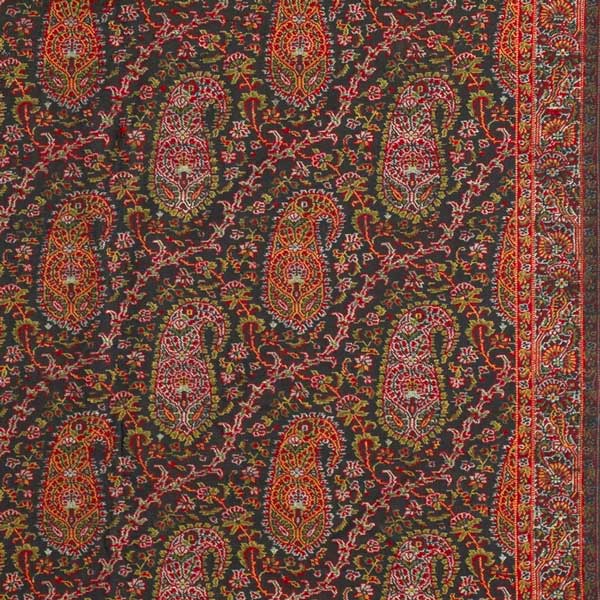
Shawl with Paisley Cones and Vines (detail), 19th century
Basement Room 13
September 21, 2022 (Wed) - December 4, 2022 (Sun)
Named for the Kashmir region of northwestern India, Cashmere goats are famous for their soft and lustrous wool that was made into luxurious shawls from the 16th to 18th century. Indian weavers used a labor-intensive technique, called a tapestry weave, to weave ornate patterns into the fabric as they made it, though it was also common to use the faster technique of embroidering an already-made cloth.
As demand for cashmere shawls grew in Europe and the Middle East, Persian weavers in Iran began to supply shawls as well. This gallery presents these shawls along with the opulent clothing and carpets of the ruling elite in Persia’s Safavid dynasty (1501–1736) and India’s Mughal Empire (1526–1858).
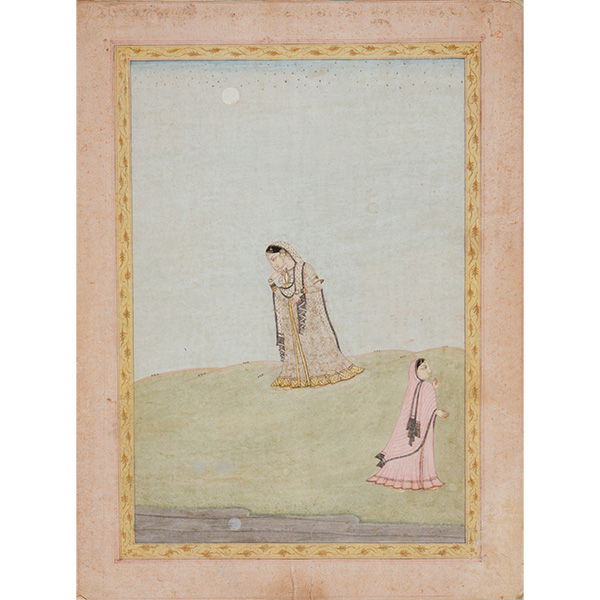
Melancholy Nayika (Nayika Bheda), By the Provincial Kangra school, First half of the 19th century
Basement Room 13
November 22, 2022 (Tue) - December 18, 2022 (Sun)
The art of “miniature painting” is one of India’s best-known genres. These paintings use elaborate brushwork and vibrant colors to depict a variety of themes, including: Indian myths, Hindu gods, portraits of kings, scenes from history, and love stories. Miniature paintings can also be enjoyed for their distinct regional styles that reflect India’s rich history of cultural diversity.
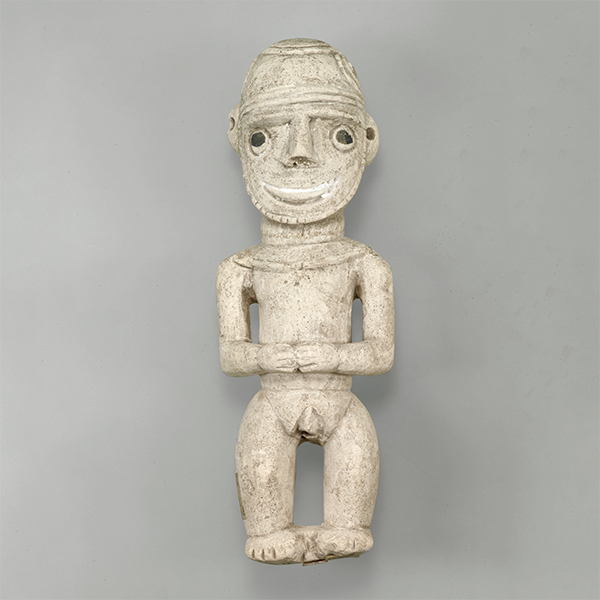
Female Funerary Figure (Kulap), Second half of the 19th century (Gift of Mr. Yoshijima Tokiyasu)
Basement Room 13
October 25, 2022 (Tue) - January 15, 2023 (Sun)
Located directly south of Japan, the South Pacific is comprised of tens of thousands of islands, including New Guinea and the Bismarck Archipelago. Around 4,000 years ago, humans migrated from mainland Asia out to these Pacific islands, where they developed their own unique cultures and beliefs.
Melanesia encompasses the southwestern region of the South Pacific and is home to many cultures where spirit worship is widely practiced, including ancestor worship. These spirits are traditionally represented in a rich array of forms, such as masks and funerary figures called kulap. This section of the gallery is currently showcasing Melanesia’s unique religious carvings, including spirit masks used in funerary rites and a wooden crocodile.